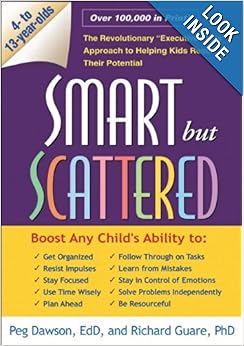Okay, I'm going to start off this post with words that may contradict the title. I'm not going to lie, these last couple weeks have been rough. Between being between four different buildings this year, learning new caseloads, feeling out my new schools, having about a million meetings (okay, I'm exaggerating on that one), and the insane amount of referrals I've gotten when it's only been three weeks into the school year, I feel like I'm barely keeping my head above water. Let me rephrase that: I'm practically drowning.
What I need is a swift kick in the butt and a good reminder on why my job rocks (even at times when it feels like it doesn't!). So, I'm making a top ten list on why being a school-based SLP is completely awesome as a reminder to myself and others, that even when our job seems to be more about the paperwork and less about the kids, what we do really does make a difference! Without further ado, in no particular order, here is why our job rocks:
1. Okay, this is for selfish reasons, but who doesn't like summer vacation, winter break, and spring break? As a mother, I can't even begin to tell you how much this time I get to have with my son means to me. Basically, this is a great job to have for family-work balance.
2. You get to be creative. Now, I realize creativity and being innovative is a skill that any SLP needs, no matter what setting. For me, I love making materials (when I find the time), creating activities, and getting inspiration from other creative SLPs. Not to mention that awesome feeling you get when your students get completely inspired and motivated while doing an activity that you've created or found!
3. School based and pediatric based speech-language pathologists have an awesome community. Between TeachersPayTeachers, blogging, twitter, pinterest, ASHA, and Facebook, it has never been easier to connect with other speech-language pathologists!
4. You get to collaborate with awesome colleagues. I'm talking the whole team: teachers, principals, other speech-language pathologists, school psychologists, social workers, occupational therapists, physical therapists, parents, and the list goes on and on! How great is it that we can easily pull people with a variety of expertise to create a plan for a child to help them reach their full potential? Not to mention the wonderful private/clinic-based SLPs who I've collaborated on with students!
5. You are were the action is! Being in the schools gives us some huge advantages when it comes to generalization! We are where the kids spend the majority of the week. We have direct and consistent access to their teachers and para-educators, who just happen to be vital members in implementing strategies for generalization. Working on social skills? We have the prime time to help generalize lessons and implement them in real life: recess!
6. Flexible scheduling makes life easy! Outside the 8:00am-3:30pm school hours, the agency I work for offers comp time, flex scheduling, and you can even apply to work from home (outside of school hours). Can't get much more flexible than that!
7. There is never a dull moment. Nothing makes the day fly by faster than a schedule filled with students, meetings, and paperwork. There are days I hear the school bell ring to signal the end of day and I didn't even realize it was 3:30pm!
8. You are making a difference. You do the therapy, you take the data, and you see the difference. There is nothing more rewarding than seeing your students reach success and dare I say, graduate?
9. You are guaranteed a hilarious moment at least weekly. Even when I'm feeling my most stressed at work, I will have a least one moment I can think back during the week that makes me smile, whether it be something a kid said or a discussion I had with my coworker.
10. Last, but certainly not least, you get to work with kids! This is just a given. What is not to love? Nothing is better than walking into a classroom of kindergarteners to get a speech student and having 25 other little people surround you asking when it is their turn.
Bonus Reason:
11. Professional development opportunities! The school setting, at least where I work, provides so many opportunities for professional development! I can't even begin to tell you how my tool box of strategies, tricks, and interventions has grown in the short two years I have been working.
Happy Speeching!
-Courtney




















































